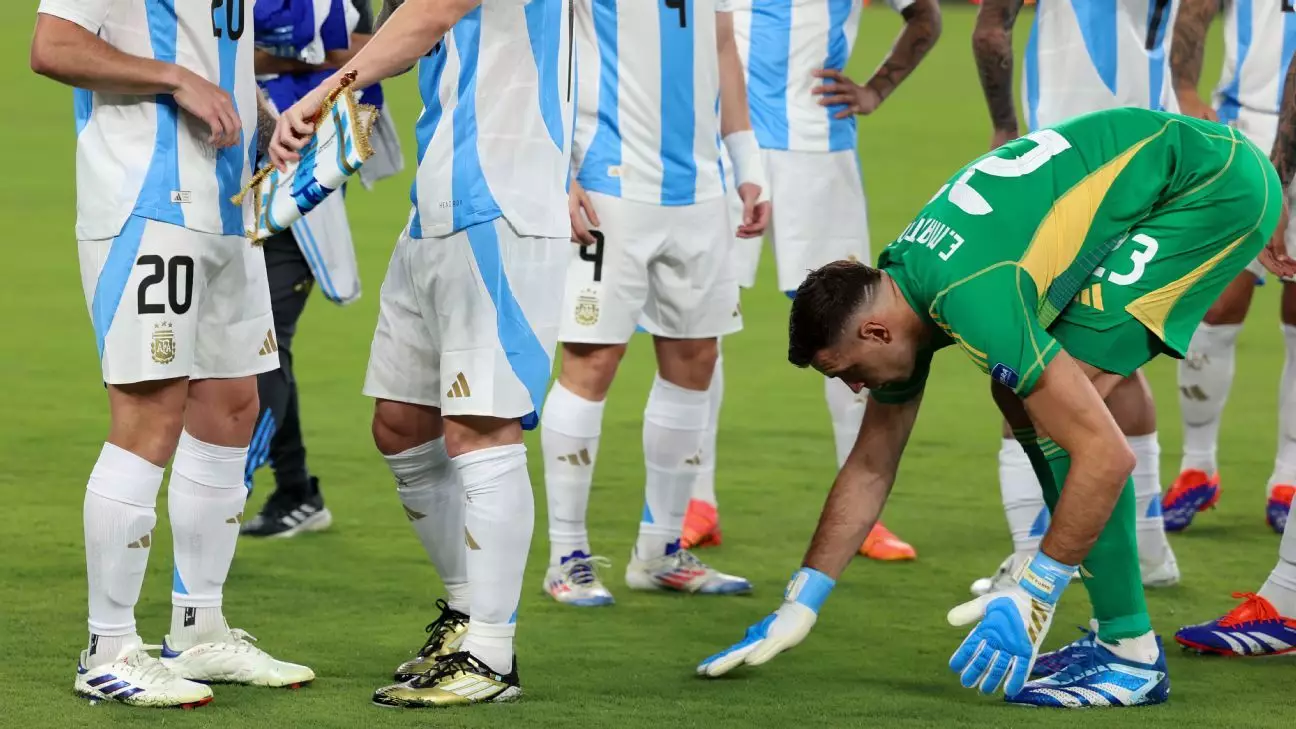The Copa América, hosted by the United States last summer, was anticipated as a precursor to the 2026 FIFA World Cup. However, it quickly descended into controversy as players voiced their frustrations about the pitch conditions, branding them “disastrous.” This public outcry not only tarnished the image of the event but also raised significant concerns about America’s readiness for the forthcoming World Cup. With this impending global showcase, FIFA is under pressure to rectify past mistakes, and this year’s Club World Cup serves as a critical testing ground to address lingering issues related to playing surfaces.
The venues for the Club World Cup, which include renowned stadiums primarily utilized by the NFL, have already sparked doubts. Many of these stadiums feature artificial turf, a factor that could hinder the quality of play and frustrate elite athletes accustomed to pristine grass fields. FIFA recognizes the urgency of the situation and is actively developing innovative solutions to ensure that the experience of playing on these surfaces does not replicate the complications that marred the Copa América.
Challenges Faced by NFL Stadiums
The sheer scale of the 2026 World Cup is unprecedented, as it will be the largest edition in FIFA history, co-hosted by the U.S., Canada, and Mexico. Amongst the 12 venues confirmed for this event, five will also host the upcoming Club World Cup. The unique challenges presented by hyper-modern NFL stadiums, most of which are designed for artificial turf, have triggered a re-evaluation of pitch management and preparation practices. Previous tactics, such as the grass overlays utilized during the Copa América, have been deemed inadequate and unsatisfactory. These temporary solutions often lead to surfaces that do not meet professional standards and can significantly alter the flow of the game.
Crucially, FIFA is prioritizing the establishment of natural grass, implementing assertive plans to transition these stadiums to higher-quality playing surfaces. Alan Ferguson, FIFA’s senior pitch manager, has articulated a resolute commitment to avoiding the missteps of the past, declaring that they are focused on unique challenges never before faced in World Cup history.
New Strategies for Pitch Quality
In a bold move, FIFA is pivoting from the problematic overlays that plagued the Copa América and instead is experimenting with “shallow pitches.” These innovative surfaces integrate real and artificial grass into a hybrid structure, engineered to withstand the rigors of a multi-game tournament without compromising quality. The approach allows for much-needed flexibility and responsiveness, as FIFA can adjust installation timelines to ensure optimal conditions.
Rather than maintaining a makeshift solution, FIFA’s new methodology involves consistent maintenance of the grass during its installation. Instead of swapping pitches throughout the tournament, one carefully installed pitch will be utilized for the duration of each event, thereby eliminating the inconsistencies of temporary overlays and allowing teams to acclimatize to the surface well before kickoff. Such a concerted strategy not only alleviates logistical headaches but also bolsters player performance, ensuring that the focus remains on the game.
The Revolutionary Role of Technology
Beyond the physical adjustments to playing surfaces, FIFA is also keenly aware of the technological advancements available to enhance these efforts. By employing modern techniques, including advanced drainage systems and climate-responsive materials, FIFA is ensuring that each pitch undergoes precise management crucial for player performance. This attention to detail signifies a broader commitment to player welfare, emphasizing how crucial it is for soccer’s governing body to adapt to evolving circumstances.
The trials of “shallow pitches” have provided invaluable feedback from players, who have expressed their views on the turf’s responsiveness and usability. This participatory aspect of pitch management not only serves to incorporate athlete perspectives into the decision-making process but also creates a more harmonious environment as the World Cup approaches.
Future Implications for American Soccer
As the Club World Cup draws near, the emphasis will be on how well the U.S. can rise to the occasion. Should the tournament proceed successfully, it could significantly enhance the country’s reputation as a viable host for future international competitions. However, obstacles persist, and there remains skepticism about how effectively transitional grass systems can perform in high-stakes matches.
Failure to adequately address these concerns may not only impact the World Cup’s integrity but could also have long-lasting implications for Major League Soccer (MLS) and American soccer as a whole. High-profile matches, featuring global icons such as Lionel Messi and Harry Kane, will spotlight the importance of quality playing surfaces. The world will be watching, and the stakes are monumental.
Embracing modernization while honoring the eternal tradition of soccer is a balancing act for FIFA, and their recent efforts in pitch management reflect an acute self-awareness of the complexities at play. With significant challenges ahead, the steps taken by FIFA present a unique opportunity to redefine player experience at the world’s most beloved game, potentially leaving a legacy of excellence that transcends the field.

Leave a Reply